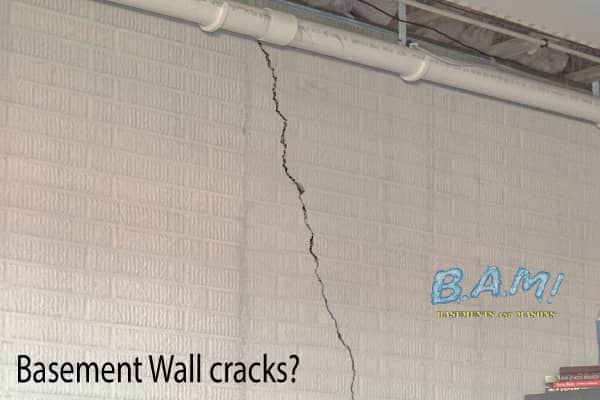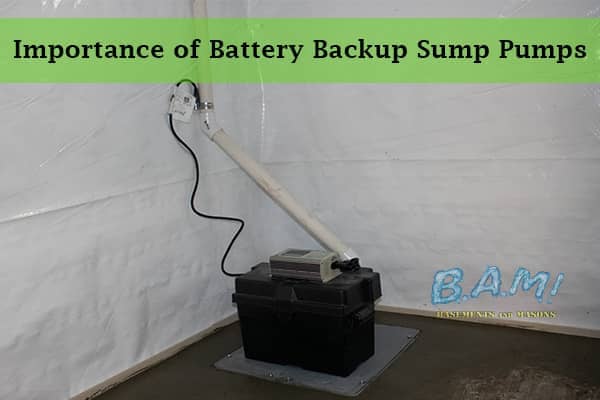Best Basement Waterproofing Fundamentals Explained
Best Basement Waterproofing Fundamentals Explained
Blog Article
Best Basement Waterproofing Fundamentals Explained
Table of ContentsSome Known Details About Best Basement Waterproofing Some Ideas on Best Basement Waterproofing You Need To KnowFascination About Best Basement WaterproofingBest Basement Waterproofing - An OverviewSee This Report on Best Basement Waterproofing
usages excavation strategies towards the bottom of the structure's structure. involves getting rid of dampness after it has entered the basement. AdvantaClean's trained professionals and technicians will certainly locate the water source. If wall or slab cracks exist, we will certainly inject polyurethane and epoxies into the fractures and secure the concession, preventing additional dampness from getting in.Proper grading around the home to direct wetness away from the structure. Putting up, fixing, or cleansing rain gutters and downspouts. Inside or outside waterproofing with filler, sealant, and/or water resistant paint. Mounting cellar air flow systems, conditioning systems, or cellar dehumidifier systems to get water out of your basement. Picking AdvantaClean's basement waterproofing solutions is an effective method to deal with wetness and avoid mold from endangering the framework of your home and the wellness of your family members.
If there's condensation on the exterior of the foil, you have high moisture in your basement. If the foil has condensation on the inside surface area (next to the wall surface), the soil around your home may be normally damp from a high water table or poor dirt drain.
You can waterproof just your indoor walls, which may address the issue. Or you can waterproof your exterior wall surfaces, which is a better bet however even more costly. Below's the scoop on the different kinds: These thick layers are cement-like. Once they dry, they adhere permanently to concrete and stonework wall surfaces.
The 4-Minute Rule for Best Basement Waterproofing
Swirl the brush at the last of application to offer the wall an attractive, ended up look. Concrete water resistant coverings can not be related to previously painted surfaces; check the tag. A 5-gallon bucket expenses about $60. Known as densifiers, they are ideal only for walls that have not been painted or secured.
But you comb, roll, or spray it on a lot more thickly one gallon covers simply 75 square feet, not the 300 square feet typical with standard paint. Water-proof paint is great for DIY application. You can use it over painted surface areas, and paint over it once it's treated (one gallon expenses $37).
It can set you back $10,000 to $15,000, depending on the work required (Best Basement Waterproofing). Exterior waterproofing includes digging deep into all around the house to the full depth of the structure walls, then mounting a water-proof finish or membrane layer topped by drain panels.
Best Basement Waterproofing Can Be Fun For Anyone
A basement without waterproofing is kind of like that. Your basement doesn't desire to go through a downpour without proper defense just as much as you don't want to.

Outside waterproofing is a waterproofing method that involves sealing your home from the outside. The foundation walls are after that cleaned up, secured, and covered with a waterproof membrane layer or sealant.

Some Known Details About Best Basement Waterproofing
It's a much more involved procedure check this site out that requires digging up your yard, which is expensive and lengthy. Outside waterproofing involves removing every little thing bordering your home, including decks, driveways, walkways, landscaping, a/c devices, decks, and so forth. If any one of the work was done inaccurately and water is still entering your cellar, there isn't much you can do to fix or repair it.
Inside basement waterproofing includes waterproofing from the within. Any water that leaks right into your basement is rerouted prior to it touches your floor.
It's an efficient approach to waterproof your basement. The downside of indoor cellar waterproofing primarily involves the setup process. This approach requires saved items, furniture, and integrated shelving or closets to be relocated from touching the cellar walls. And during setup, your cellar can not be made use of. The most significant difference between both approaches is this: Exterior waterproofing is a preventative option and indoor waterproofing is a corrective solution.
Best Basement Waterproofing Fundamentals Explained
To conclude, exterior and indoor browse around this site cellar waterproofing are both efficient techniques of securing your home from water damage. Outside waterproofing develops a barrier that description avoids water from entering your home, while indoor waterproofing reroutes water that does enter your home. And it is very important to note that outside waterproofing is a costly and disruptive installment procedure when compared to indoor waterproofing.
Whichever method you choose, see to it you pick a trustworthy and credible specialist for the work. Both approaches require seasoned workers to take care of the work. If you have any kind of concerns about cellar waterproofing, please connect to us. And if you remain in our service location and have water in your cellar, call us for a free, no-obligation home inspection.
You can complete our form right here. Best Basement Waterproofing, begin a chat in the bottom right-hand edge, or call us at 1-800-827-0702
Report this page